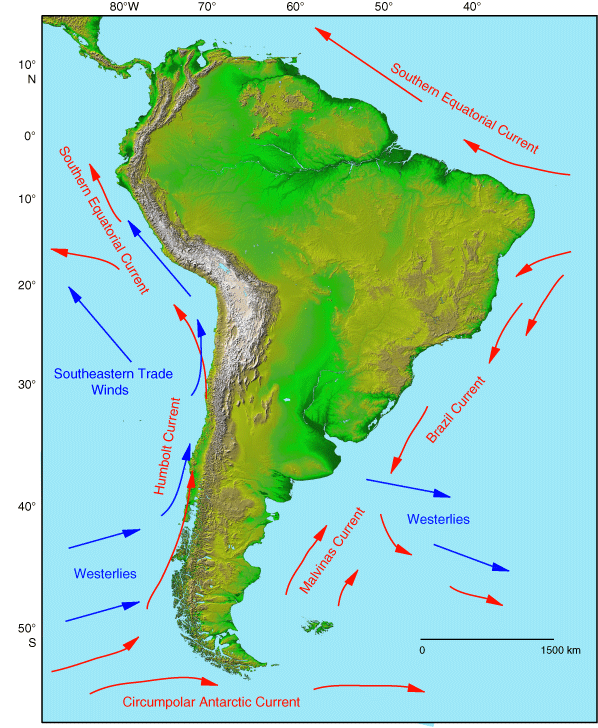As we leave the home base of our sampling scheme for the last time, we have thrown the way point out to the north west. As we get closer to shore, there is a danger of being swept to the south by the Brazil current shown in the figure below:
We have also heard that this current meanders quite a bit, so depending on where we catch it, the strength of the southward flux may vary.
MyOcean’s forecast today has a pretty cool looking eddy field within our vicinity. In the upper layers, there are two well defined eddies to our east and to the north west that can be seen through 300m. Below that, the eddy to the east fizzles out while the one to the north west weakens with depth. In the RTOFS model, the main feature of interest is the eddy to our West-Northwest that lies within the path we plan on flying towards the coast. Depending on how fast this eddy moves we may be able to dissect it in the coming weeks.
Force Wind Sea & Honor



















